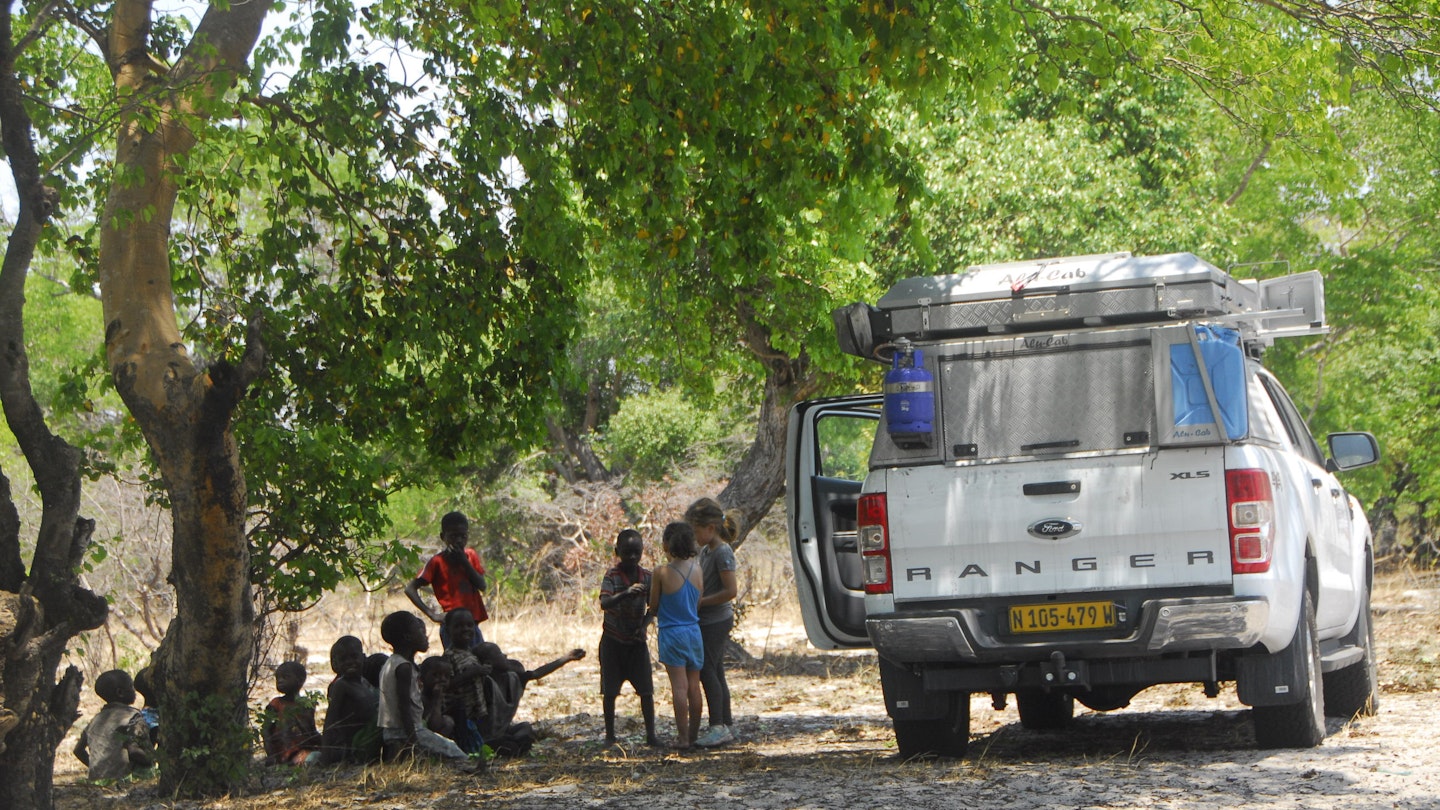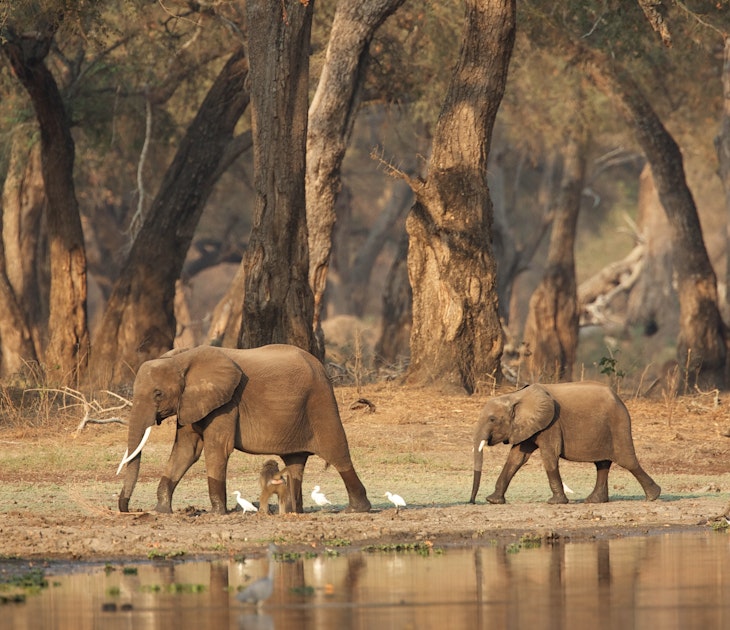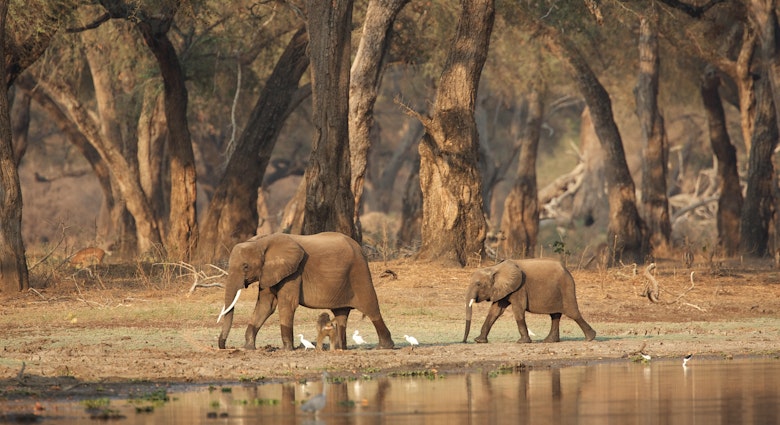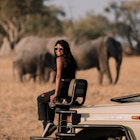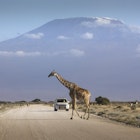Wanting to share his love of Africa and its wilderness with his young daughters, Lonely Planet writer Anthony Ham travelled to the continent with them both in tow. Was it all that he (and they) hoped for?

Family safari
It wasn’t quite the African adventure with my daughters that I had planned. There we were, in a remote corner of Zambia and V, my six-year-old daughter, spent most of the night being violently ill. We were alone in the campsite, a day’s drive from the nearest hospital. Things really started to unravel the next morning when she tipped hot water over her bare legs. Needless to say that it was around then that I truly began to question my decision-making as a father. What on earth was I thinking? Later that night, I saw the fear in C’s eyes as we ate around the campfire while hyenas circled just beyond the light. What kind of father would do that to his children?
Such dramas weren’t quite what we had planned when we flew into Windhoek, Namibia, picked up a 4WD camper, and drove out into the wild. It was the first time that my daughters, aged six and nine, had set foot on African soil and my rationale was simple: I wanted them to fall in love with a continent that has long been a critical part of who I am. I also wanted that to happen before they grew up, before they became too cool for travelling with their family or for an adventure that involved lots of potentially dangerous animals and very few comforts.
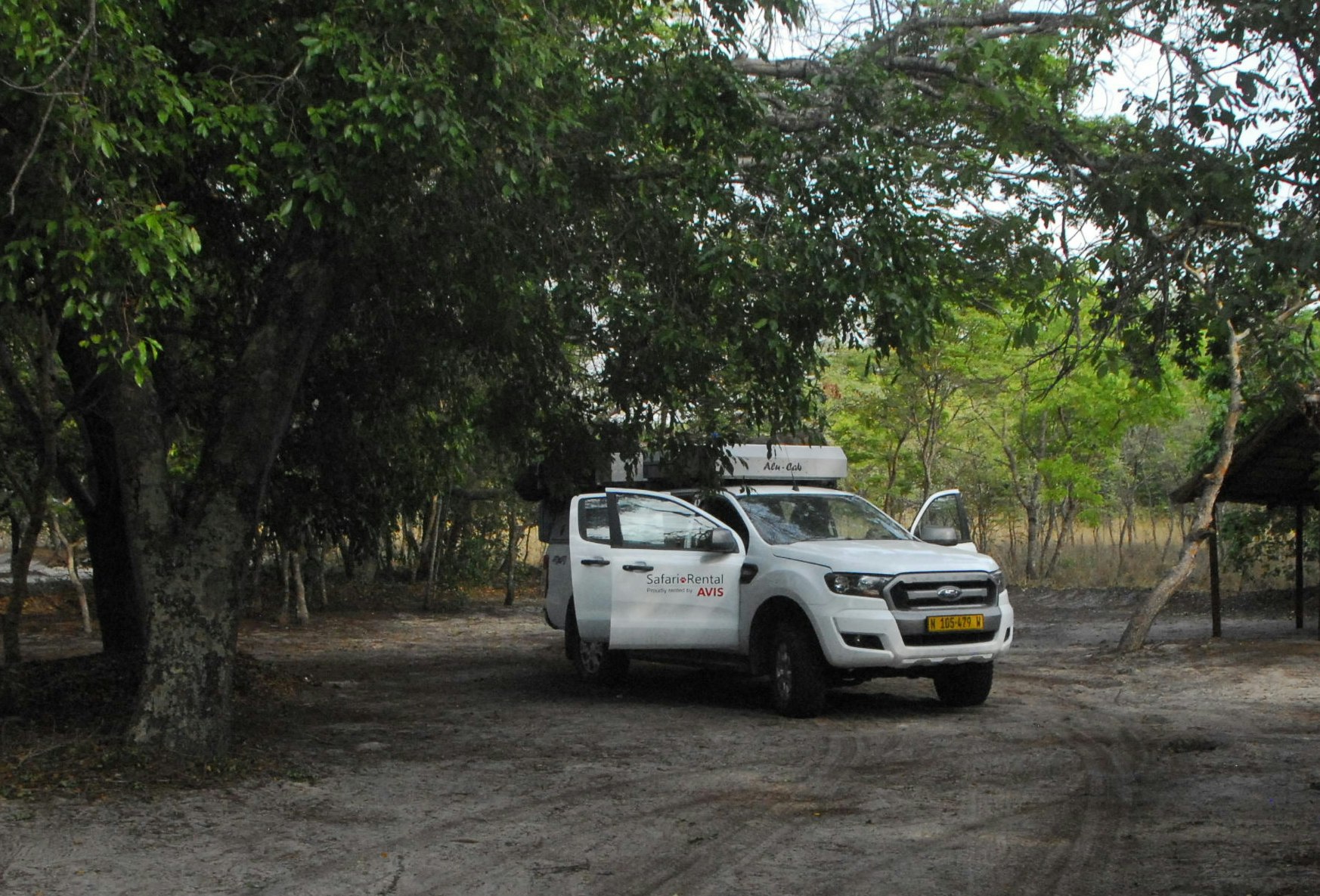
The first couple of weeks were simple enough. M, my wife, their mother, was with us, and together we went on safari. They all held their breaths as their first leopard strolled past the vehicle at Okonjima, so close that they could have reached out to touch it. They began a love affair with elephants in the epic dust of Etosha National Park, one of my favourite parks in all of Africa, and later sat in awe at Elephant Sands Camp in Botswana while elephants drank no more than a trunk’s distance away from where we stood. They drew near to meerkats out on the plains of northern Botswana.
And then M flew home to return to work. We were on our own and about to drive off the map.
"A father travelling alone with his daughters never ceased to break the ice with otherwise stony-faced immigration officials"
Border crossings
We left M at the airport in Kasane, Botswana, and drove across the border into Namibia. My girls were fast becoming veterans of African border crossings – they made sure I had the car’s papers in order and didn’t forget one of the passports. African border posts can be quite the trial – long queues, occasional corruption, an obsession with minutiae and paperwork – but a father travelling alone with his daughters never ceased to break the ice with otherwise stony-faced immigration officials. We had, thankfully, heeded the warnings about carrying the girls’ birth certificates and an affidavit signed by their mother giving them permission to travel with me and without her – if travelling in southern Africa with your kids, don’t leave home without these papers.

Two hours later, just beyond the Namibian border town of Katima Mulilo, we drove into Zambia. Leaving Botswana had been no problem, and the Namibian border was a breeze, but Zambia was another story, a merry-go-round of passport control, customs declarations, insurance for the car, taxes, forms in triplicate and money changers. I have rarely been more aware of my responsibilities as a father than I was as two rather intimidated young girls pressed close against my legs amid the crush and clamour of bodies.
"We would be alone – no convoys of safari vehicles clustered around a lion pride such as in the Masai Mara or Kruger National Park, or the procession of tourist vehicles headed for Victoria Falls"
But by mid-afternoon, we were safely inside our third country of the day and speeding north towards our campsite on the banks of the Zambezi River with an audiobook of The Magic Faraway Tree on the car’s CD player. Life was good.
Liuwa Plain National Park
Our destination was Liuwa Plain National Park, one of the most isolated corners of the continent. Far closer to Zambia’s border with the Democratic Republic of Congo than it is to the national capital, Lusaka, Liuwa Plain is one of Africa’s forgotten corners. We would be alone – no convoys of safari vehicles clustered around a lion pride such as in the Masai Mara or Kruger National Park, or the procession of tourist vehicles headed for Victoria Falls.

Once devastated by poachers, Liuwa Plain now falls within the portfolio of African Parks, a seriously impressive NGO that brings troubled national parks back to life. I was there to write the park’s story, and the story of its famous lioness, Lady Liuwa, who had survived for nearly a decade as the last surviving lion for more than a hundred miles in any direction. We were here because Liuwa is an unlikely African success story, home to the second largest annual migration of wildebeest on the continent and a place where African Parks is rebuilding lion prides and wildlife populations.
Where the paved road ended and where the national park began, we met our armed escort. Tembo, a giant of a man with an AK-47 never far away, would be our companion over the next five days as we drove all across the Serengeti-like plains of Liuwa. Together with my daughters, we learned the elaborate greeting rituals for meeting an African chief who had stood up to the naysayers in his community, to those who had feared the return of lions. We communed with Lady Liuwa on a remote salt pan, one of the last public appearances of this ageing matriarch who kept the presence of lions alive in Liuwa when none other survived; she died a few months after our visit, her legacy secured. And we were there as new males were brought in and new cubs were born, ushering in a hopeful new era.
The impact on my daughters
Yes, there were black mambas in the grass, and no, my girls weren’t always thrilled to be waiting around for long hours when things didn’t happen as expected. And yes, they survived the illness, hot water spills and circling hyenas unscarred. But there were precious moments, too. Like watching them grow in self-sufficiency and courage, as they played in the African bush with no need for iPads. They learned how to identify a violet-backed starling, spent hours on the detective trail of a spotted hyena den, and loved riding shotgun on the roof alongside Tembo looking for Lady Liuwa.
"They shared no common language. Their life experiences were worlds apart. But none of that mattered in the dust of Kandiana"
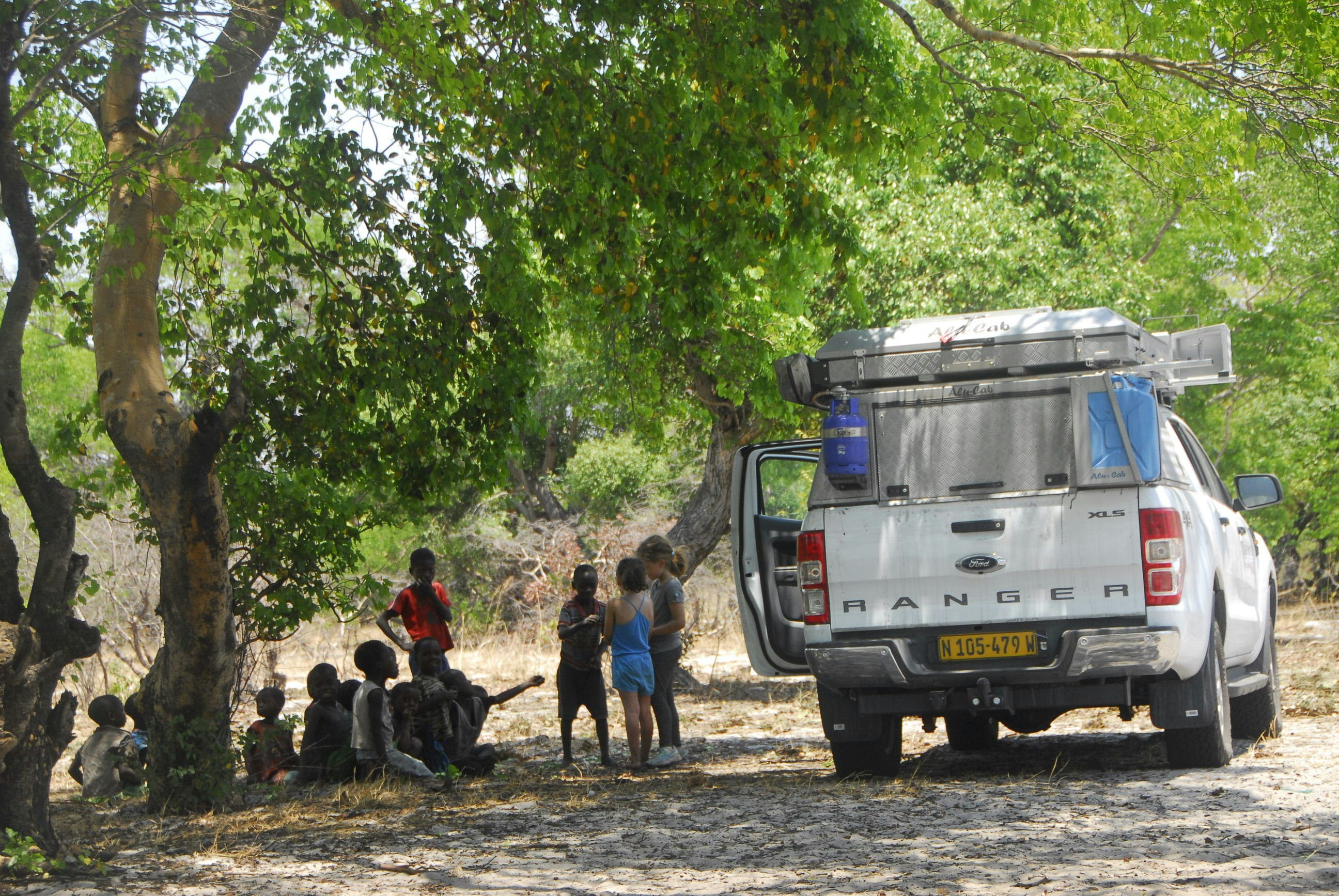
On one occasion, I was interviewing a group of village elders under an old mango tree in the village of Kandiana. I watched from the corner of my eye as the village children drew near to the vehicle where my daughters sat. C and V were shy at first, but it didn’t take long before they were out of the vehicle, all playing together. They shared no common language. Their life experiences were worlds apart. But none of that mattered in the dust of Kandiana. By the time we reached the Kalahari, back in Botswana a week later, my girls were old Africa hands.
My daughters have since returned to Africa, having travelled with me through the Serengeti and Ngorongoro Crater, through the Masai Mara and Amboseli. But the status of Liuwa Plain in family lore is secured as the place where a whole new generation of the family first tested its adventurous spirit, experienced the joys of the African wild, and fell irretrievably in love with the continent.
You may also like:
Solo parenting in the foothills of Morocco's Atlas Mountains
Baby travel: why and where you should head afield with your infant
Turning myth into reality: the white lions of Timbavati
